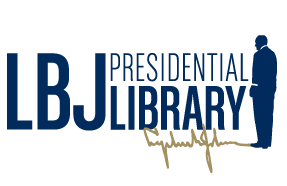The Glassboro Summit
Artifact ID1973.1.1608
Object Type
Cartoon Drawing
Artist
John Shevchik
Publisher
Beaver Falls News Tribune
Gifter
John Shevchik
Medium
Ink and grease pencil on drawing paper
DimensionsOverall H 12 1/2 in x W 10 7/8 in (31.8 cm x 27.6 cm )
Physical DescriptionPhysical DescriptionOriginal cartoon drawing. LBJ and another man (“Kosygin”) hold a sign ("Vietnam and Middle East") and stand looking at each other on a bomb ("World Peace"). Another man ("Red China") lights the bomb's fuse. Another man ("The World") looks on. Caption: “The Glassboro Summit”. Artist signature lower right: "Shevchik”.
Inscriptions and MarkingsHandwritten at upper left: [underline] [illegible] “day”.
Historical NoteIn August 1964, US ships were seemingly attacked in the Gulf of Tonkin, leading to the Gulf of Tonkin Resolution that allowed President Johnson to take military action. In February 1965, Johnson authorized Operation Rolling Thunder to bomb North Vietnam and in March, 3500 Marines were deployed in Vietnam. Over 1965, President Johnson escalated the conflict to a full-scale war and over 1967, there were 500,000 American troops in Vietnam. On June 5, 1967, after a series of border skirmishes and rising tensions between Israel and Syria and Egypt, Israel attacked Egypt. This led to a war that lasted until June 10 between Israel on one side and Egypt, Syria, and Jordan on the other. Israel captured a lot of territory from the war and hundreds of thousands of Palastinians became refugees. The Sino-Soviet split were the tensions between China and the Soviet Union during the Cold War. Although both nations were Communist, they competed with each other over the same spheres of influence. As a result, the United States had to practice triangular diplomacy to maintain relations with both Communist powers. US officials continued to refuse to recognize the People’s Republic of China in favor of Taiwan and did not allow the PRC on the UN Security Council. The US government also ensured that it would not want a war with China, but remained steadfast in its position on Vietnam. In June 1967, Lyndon Johnson and Aleksey Kosygin met in Glassboro, New Jersey to discuss issues concerning world peace such as the Six Day War, the Vietnam War, and the nuclear arms race. It was notable for being successful in decreasing tensions, even though no agreements were signed.Additional Details
Custodial History NoteThe item was a gift from the general public to President Johnson during his term in office. It was received by President Johnson, until the President donated it to the Lyndon Baines Johnson Library and Museum in 1973.
Credit LineGift of Lyndon Baines Johnson
National Archives Catalog CollectionLyndon B. Johnson Library Museum Collection (National Archives Identifier 192413)
National Archives Catalog SeriesGifts from the General Public (National Archives Identifier 189698395)
Use Restriction StatusRestricted - Fully
Use Restriction NoteCopyright or other proprietary rights are held by individuals or entities other than the LBJ Presidential Library and Museum. The LBJ Presidential Library and Museum does not warrant that the use of materials will not infringe on the rights of third parties holding the rights to these works, or make any representations or warranties with respect to the application or terms of any international agreement, treaty, or protections that may apply. It is your responsibility to determine and satisfy any copyright or other use restrictions. Pertinent regulations can be found at 36 C.F.R 1254.62.
Person Referenced
Lyndon Baines Johnson
(United States, 1908 - 1973)
Person Referenced
Aleksey N. Kosygin
(Soviet Union, 1904 - 1980)
Person Referenced
Mao Tse-tung
(China, 1893 - 1976)
In Collection(s)
Not on view
Place Described
Place of Publication




